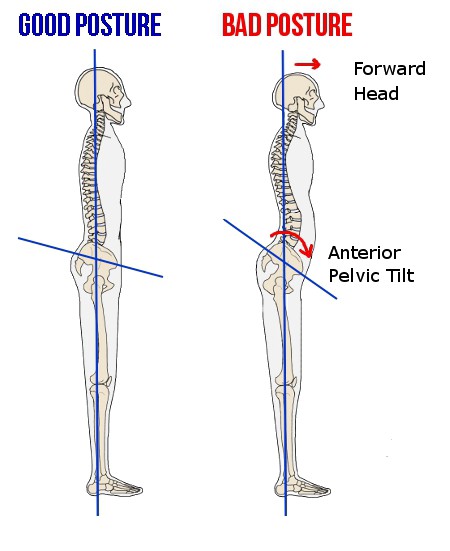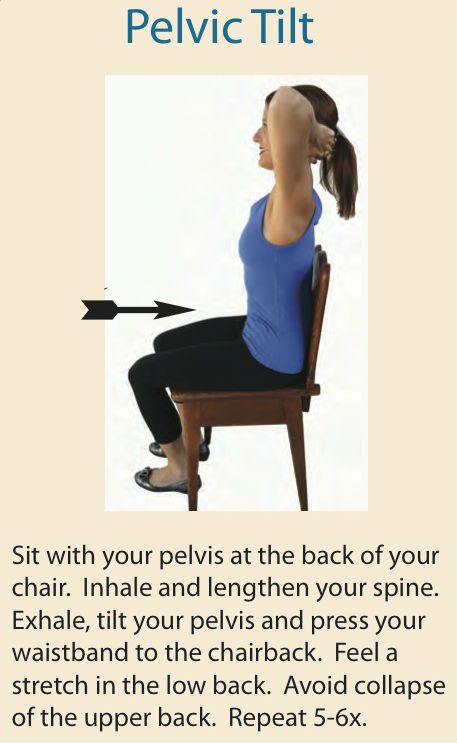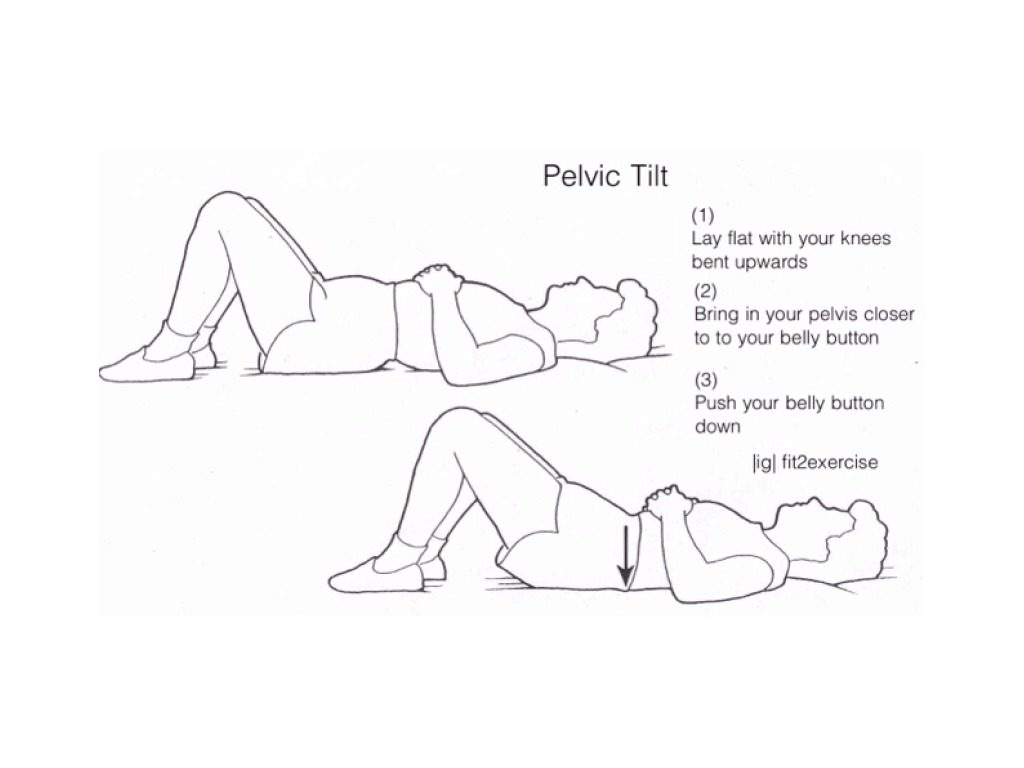Disclosure: This article may contain affiliate links. When you click these links, I may earn a small commission at no cost to you. As an Amazon Associate I earn from qualifying purchases at no cost to you. See full policy here

Do you sometimes find yourself leaning forward in your chair and then later notice pain in your low back? Sitting in this position can cause anterior pelvic tilt which can lead to low back pain.
What Is Anterior Pelvic Tilt?
Anterior Pelvic Tilt is when your pelvis or hips are tilted forward. This causes an increased arch in your low back which causes your belly and butt to stick out.

The Anatomy Of It
Anterior Pelvic Tilt is due to imbalances and weakness in the muscle groups of the gluteals (butt), hamstings (back of thigh), and abdominals (tummy) and tightness in the hip flexors, quadriceps (front of thigh), and low back muscles.
Can Anterior Pelvic Tilt Be Fixed?
So if you have an Anterior Pelvic Tilt or just want to stretch and strengthen some of your postural muscles, the exercises below will help you to do just that.
Exercises To Fix Or Decrease Anterior Pelvic Tilt
1. Pelvic Tilt in Sitting

2. Pelvic Tilt in Lying Position

3. The Plank

- Lie on floor with your elbows bent. Make sure your hands are not too close together as this could cause internal rotation of your shoulders leading to joint instability.
- With feet shoulder width apart lift your body off the ground in a straight line. Don’t allow your head, shoulders, and hips to drop as this can put pressure on your spine.
- Make sure your shoulders, hips, and ankles are in alignment
- Tighten your abdominal muscles and hold for 30 seconds or more (as tolerated). Don’t hold your breath as this can cause a build up of lactic acid in your muscles causing pain.
- Rest for 10 seconds. Repeat 5x
4. Kneeling Hip Flexor Stretch

- Take a kneeling lunge position on the ground with your front leg at a 90 degree angle in front of you.
- Slightly lean forward so that your hip on the side of you kneeling is in extension (forward).
- Relax in the extended position and feel the stretch for 10 seconds.
- Repeat 2x each side.
5. Glute Bridge

- Lay on your back with your feet flat on the floor, hip width apart, and your legs bent at a 45 degree angle.
- Squeeze your glute (buttock) muscles and raise your hips pushing your heels down into the ground.
- Make sure your hips are in alignment from your chest to the top of your knees.
- Hold for 15 seconds and make sure you are breathing comfortably.
- Repeat 5x.
In this post so far I have descibed what Anterior Pelvic Tilt looks like, some causes of Anterior Pelvic Tilt, and Exercises To Help Correct Anterior Pelvic Tilt. Now I am going to give you :
Tips To Avoid Anterior Pelvic Tilt
- Make sure your sitting posture is correct with your back against your chair, your monitor is at the correct height, and your feet are flat on the floor.
- Remove any items from your back pockets before you sit down to keep your hips level.
- Don’t sit with your legs crossed for extended time periods.
- Consider a standing desk that can be raised or lowered depending on if you want to sit or stand.
- Get up and move every 30 or 60 minutes.
Now It’s Your Turn!
Do you or any friends, family members, or co-workers have this type of posture? Please share your ideas for other exercises and/or tips for correcting Anterior Pelvic Tilt. I would love to hear from you!
Quick Disclaimer:
All content in this post is for informational purposes only. It is not intended to be diagnostic nor as a substitute for consultation, examination, and treatment by a qualified health professional. Always consult with your physician before beginning an exercise program.
Sources: http://backintelligence.com, http://strengthery.com







